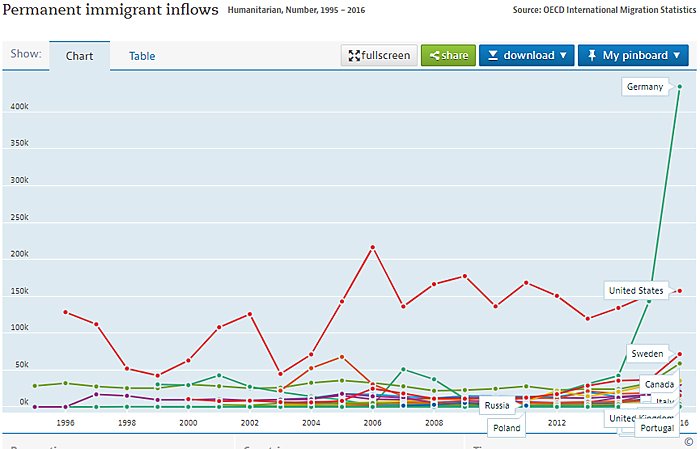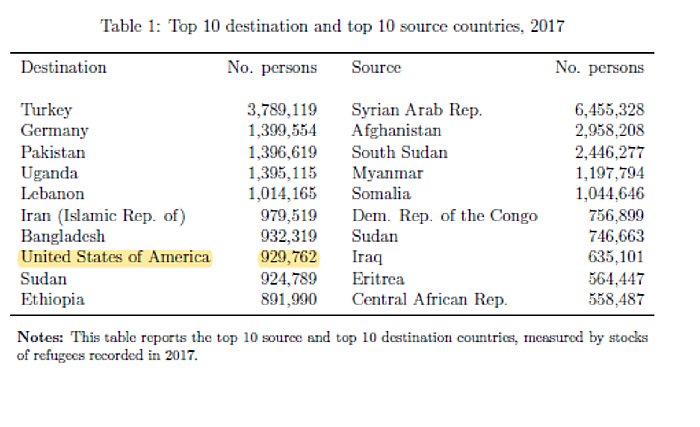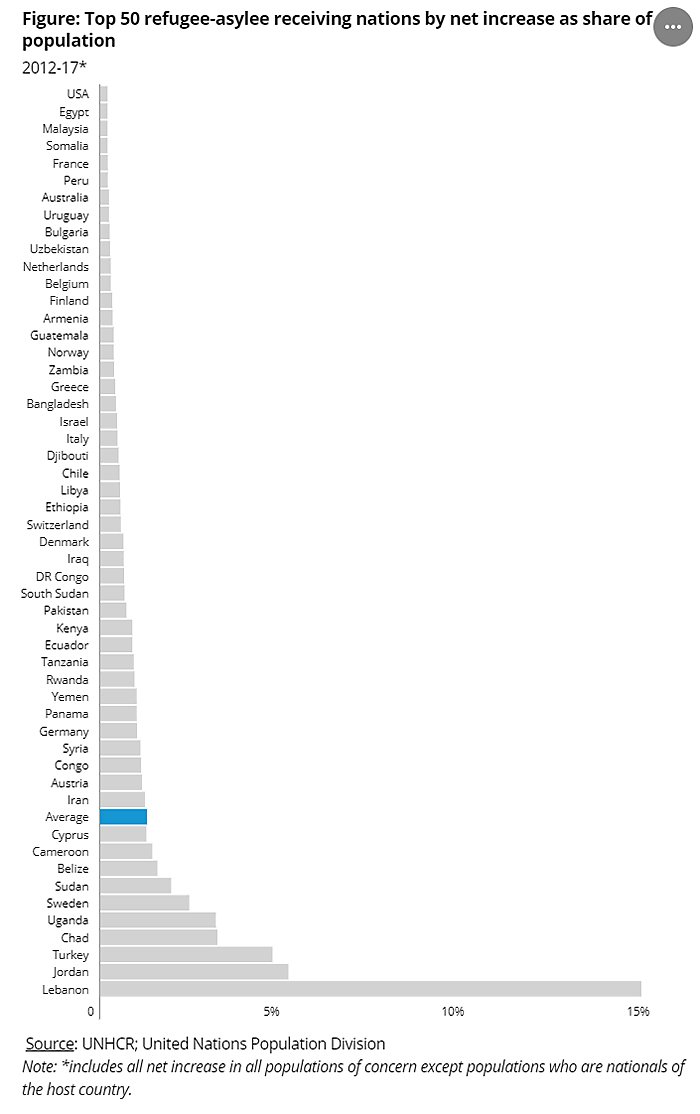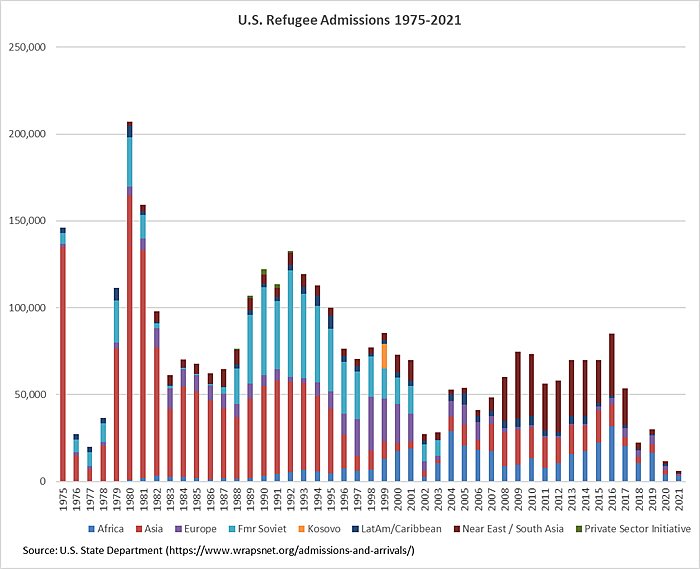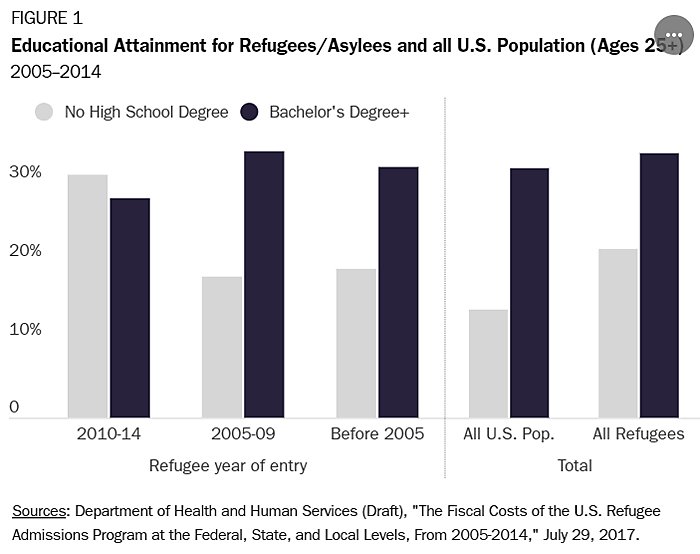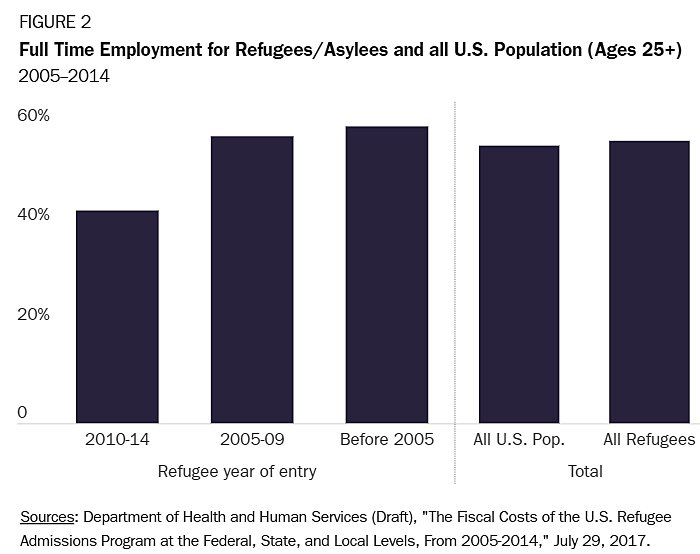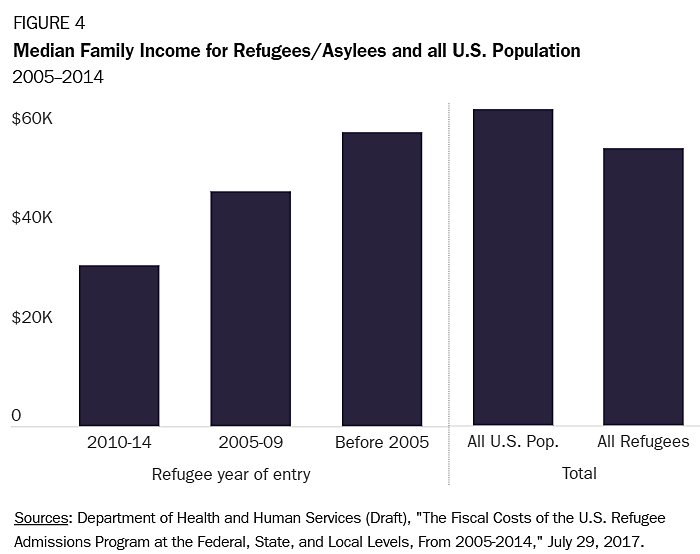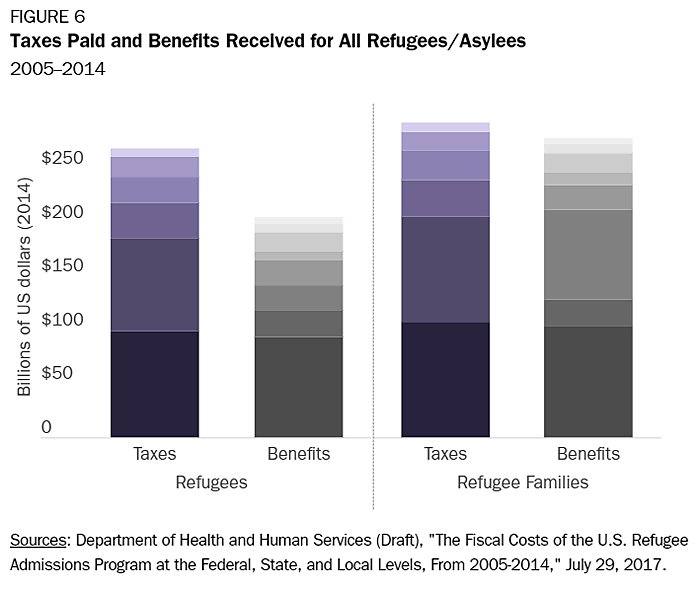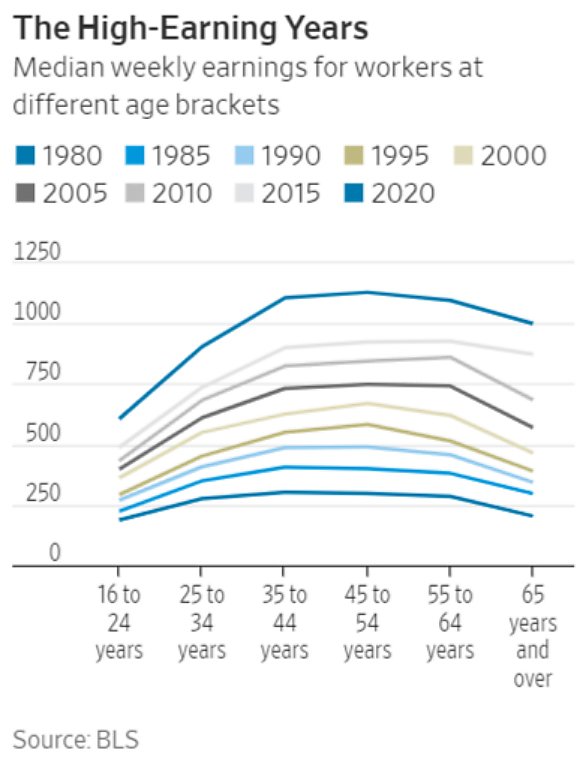Dear Capitolisters,
For those of us addicted to the news and habitually screening #PoliticalTwitter, it’s been impossible to avoid seeing the gut‐wrenching chaos in Afghanistan over the last few days. Foreign policy is way (way) out of my lane—my general view is that recent events are a bipartisan debacle years in the making, and I have literally zero patience for partisan point-scoring—but I’m compelled to spend today examining one aspect of the situation: U.S. refugee policy, which is most obviously a major part of the Afghanistan mess but also a broader policy issue that’s been percolating for years. On the former item, the situation on the ground is opaque and ever‐changing, but it does seem (at this point at least) that the process for getting the Afghans at most serious risk out of the country was mired in ridiculous red tape that left thousands of them stranded; that the administration seriously miscalculated the time it would have to complete this process; and that—as Haley wrote in Uphill months ago—this was all totally and utterly expected. (Haley has been just killing it on Twitter this week, BTW.)
And, perhaps even more troublingly, the usual suspects on the right are already laying the groundwork for resisting any significant U.S. efforts to take in Afghan refugees—pressure that, per this depressing Politico piece (then corroborated by Reuters), seems to have an effect on not only Republicans, but even the Biden administration itself. This anti‐refugee sentiment—for Afghanistan and beyond—strikes me as wrong for a whole host of reasons, so that’s what we’ll discuss today.

